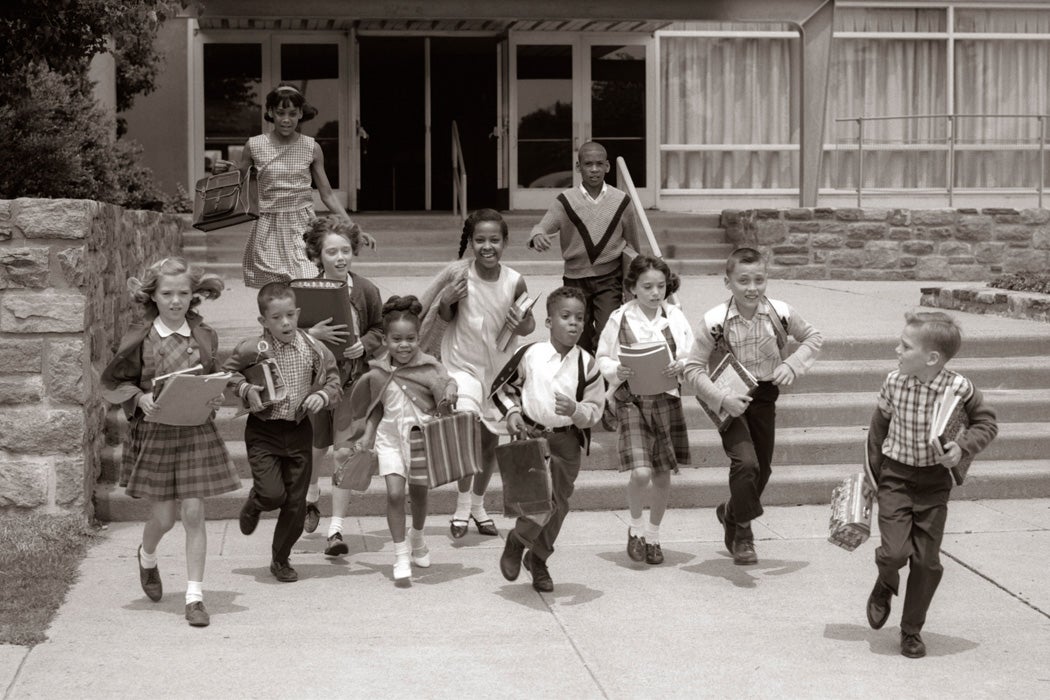A staggering three-fourths of all white adults in the United States have no black friends. This is significant for many reasons, one of which is the outsize impact peer groups can have on the way people think about color and race.
The July 1964 passage of the Civil Rights Act seemed like a landmark in race relations. But as a game-playing study headed up by Sidney M. Peck and Sidney Rosen in that era showed, optimism about the next generation’s acceptance of those with brown skin may have been misplaced.
Peck and Rosen were intrigued not just by racial perceptions, but by how peer groups influenced ideas about skin color. At that time in the Milwaukee suburbs, there was what the researchers called “a concern about the color problem.” The suburbs’ mostly-white children might later be confronted with neighbors of color. “How will they take to these children of different color?” Peck and Rosen wondered.
So they gathered 260 six- and eight-year-olds from majority-white schools in Milwaukee, Wisconsin, where state university expansion had prompted white flight. This group of white children played what looked like a card game, but they were really teaching the researchers observing them about their attitudes toward race.
The researchers asked them questions about what they’d look like if they could choose, and what the kindest person and the meanest person in the world looked like. Then they gave kids the opportunity to play a “game” in which they rated who they liked best based on photographs of children. Finally, they played Butterflies and Bats, a group game in which kids first chose people for their “club” based on photographs, voted in new members based on headshots, and later responded to the same questions about what they’d look like if they could choose.
Weekly Newsletter
Some children expressed a distinct aversion to people with dark skin. The team characterized the children as open- or close-minded, and found that few identified themselves with photographs of black kids. Though many children had individually chosen black kids to be part of their clubs, all but one group excluded them during group interactions.
Children “who privately expressed direct hatred for Negroes, implanted the seeds of exclusion in the peer group,” they write. “Through facial gestures, giggling, verbal grimaces, and spoken orders…they were able to move the actual group decision in their favor.” Though open-minded kids were able to sway group opinion, too, the children still voted to exclude black children in private.
Overall, the children were aware of skin color, preferred white children to black children, excluded black kids from their clubs, and experienced significant peer influence.
The researchers ended with a plea for educational intervention. “The responsibility of elementary school educators to deal with the issue of race relations can no longer be ignored,” they wrote. They emphasized that peer groups play a critical role in racial consciousness and, ultimately, discrimination and social attitudes.







